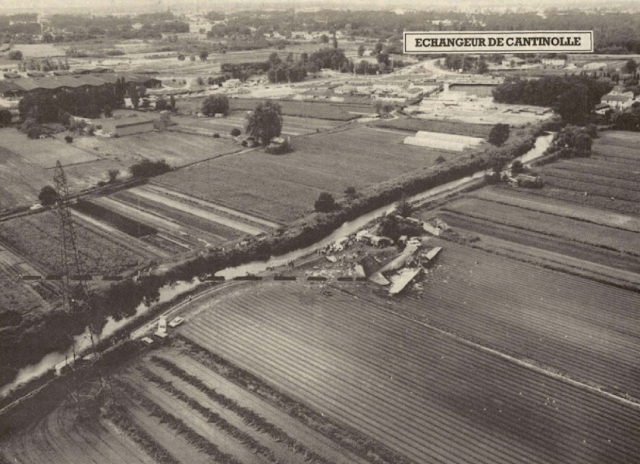Among France’s box office hits of the 1980s, Les Fugitifs is one of the most fondly-remembered by cinema-goers, and still gets regular screenings on terrestrial TV. And, it just so happens that a number of the film’s key scenes were filmed in Bordeaux! Invisible Bordeaux teamed up with Jérôme Mabon, who runs the excellent La Pellicule Bordelaise blog, to track down some of the locations and to attempt to merge those scenes from the 1980s with the city as it looks in 2022!
 |
| Source: mauvais-genres.com |
Les Fugitifs, written and directed by Francis Veber and released in 1986, was one of a trilogy of his films that starred legendary actors Gérard Depardieu and Pierre Richard as recurring characters Jean Lucas and François Pignon, the others being La Chèvre and Les Compères. The supporting cast in Les Fugitifs also included veteran thespian Jean Carmet, and child actor Anaïs Bret, who put in a wonderful performance as widower Pignon’s young daughter, Jeanne.
Les Fugitifs opens with Jean Lucas (Depardieu) being released from jail, a reformed man having done his time for a number of bank robberies. Trying to pick up the pieces, he heads to a bank to open a bank account, but is himself caught up in an attempted bank robbery conducted by the hapless François Pignon (Richard). After messy beginnings the unplanned encounter results in the two men (later joined by Jeanne) being on the run, and the film recounts how they more or less manage to stay one step ahead of the authorities.
Some key opening sequences were filmed on location in Bordeaux, such as this one featuring Lucas/Depardieu and two police officers outside Mornier jewelers, who are still very much present on Rue Sainte-Catherine. Although they are sat in a car, by the 1980s the street had already been fully pedestrianized!
The action then switches to Place Saint-Michel. Lucas/Depardieu can be seen crossing the busy square and crossing the road to a branch of the fictional bank BNT. The following scenes, set inside the “bank”, were shot in a studio setting.
When news of the attempted bank robbery reaches the police, the officers promptly stick their flashing blue light on the roof of their glamourous unmarked Renault 20 and make a spectacular turn on Place Tourny, almost colliding with a bus in the process.
Once the officers reach Saint Michel, along with a small army of riot police, this being the 1980s, it interrupts an aerobics class taking place on the first floor of a typical Bordeaux building.
Now on the run together, the two unlikely heroes crash a stolen car into a building site on Rue de Macau (where the Jardins de Tivoli residence can now be found), a quiet residential street which is a surprising place to have served as a backdrop for scenes from a box office hit! They then turn their attentions to another car which pulls up opposite (a rather smart Porsche 944, thanks Patrick!), dispose of the driver (who has turned up for a romantic date), and make a swift getaway.
The plot thickens when Pignon/Richard reveals to his reluctant partner in crime that he has a daughter. She is soon collected, then father and child negotiate some of the narrow streets of Bordeaux, before abandoning their means of transport ahead of a police barrage… and the pair head into Galerie Bordelaise to do a bit of window-shopping.
After various twists and turns, Lucas/Depardieu ends up watching over young Jeanne and they spend a night sleeping rough in a warehouse on Rue Terre des Bordes, which runs along the southern side of Saint-Jean railway station.
Using the latest in a long series of stolen vehicles (this time it’s a Caraïbos delivery van), the fugitives end up first outside and then inside the Jardin Public., and once again narrowly escape being arrested by the police.
But that is where we will leave Gérard Depardieu, Pierre Richard, and Anaïs Bret, given that the film’s other exterior scenes were shot in Meaux, near Paris, and (possibly) in the French Alps… so if you wish to find out what happened next, and want to know whether the fugitives somehow managed to avoid getting caught, you will have to hunt out the film for yourself… or wait until it is next shown on TV!
You could also watch the US remake of the film, Three Fugitives, which starred Nick Nolte, Martin Short, James Earl Jones, and Sarah Doroff (and was also directed by Francis Veber)… but which does not have the added bonus of featuring scenes filmed in Bordeaux!


































0 commentaires: